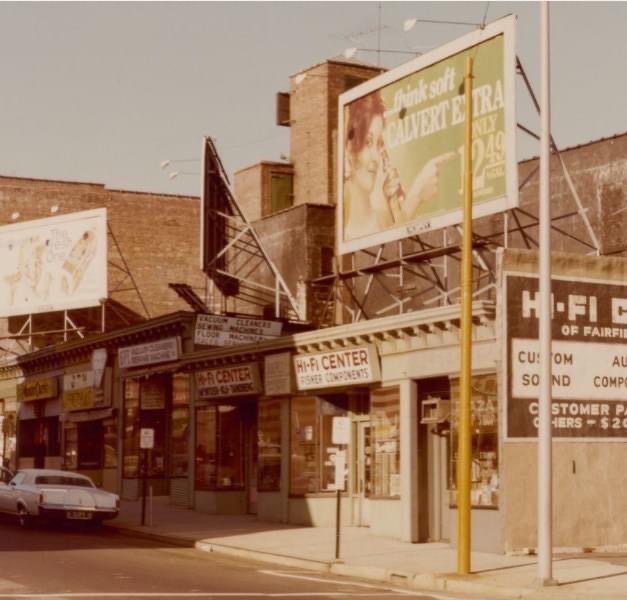AE 3, 15 mm, 2.52 g, unknown mint, c. CE 367-378
O: diad draped/cuir. Bust r. DN GRATIA[NVS PF AVG]
R: Victory flying to left, [SECVRITAS REP]VBLICAE
Ex: Max Schlachter (1919-1987)/Plaza Stamp & Coin.
86 Congress Street
Bridgeport, CT
View of Plaza Stamp & Coin at 86 Congress St in Bridgeport, CT c. 1975
This is the first Roman coin that I purchased in 1971. My Dad (z”l) paid $1.00 for this coin that I picked out of the dealers $1 pick junk box. Though this particular dealer’s junk box, as I have since learned had some little treasures here and there.
I had no idea as to who was depicted only that it was Roman. Over the next few years I patiently tried to figure out the incomplete inscriptions, and eventually with the aid of some dealers illustrated lists I determined that the coin likely belonged the the 4th century CE.
I continued my patient pursuit for something tangible to identify the coin, since there were limited if any sources available at my local libraries. My first breakthrough came when I deciphered the DN, and learned through my research that this was an abbreviation for Dominus Noster, “our lord”….with that I figured that the name of whoever was depicted would likely follow that title.
The hunch paid off when I read G-R-A-T-I.
With this less than confident reading, and the thought that this coin belonged to the 4th century, I picked up my 1971 World Almanac and looked for the regnal lists of the Roman Emperors.
Just to be sure I began with Augustus, the first name on this list and methodically worked my way down becoming ever more disheartened since I couldn’t match the letters I had with any name encountered…then I came to Constantius II 337-361, Julian II 360-363, Jovian 363-364, Valentinian I 364-375, Valens 364-378, Gratian 367-383, Valent…..wait a minute….I looked again and noted G-R-A-T-I….A-N…..That was it!! After nearly three years of on again off again often tenacious searching through very limited resources, I had finally determined that the coin likely belonged to Gratian CE 367-383.
This was all finally confirmed when I went to the public library in a nearby city where they had an old copy of the 1964 Roman Coins and their Values. I looked under Gratian and was able to determine what the reverse ultimately was and there you have it.
Shortly after that, once I had enough confidence to feel that I could conquer my next purchase, I returned with my Dad (z”l) to the same shop and made more purchases, patronizing the shop until around 1980 or thereabouts when the shop closed and the owner passed away shortly thereafter. The efforts put forth in determining the identity of this coin have paid off with every purchase acquired since. It is always more rewarding to purchase a lot of unidentified coins and apply the skills I learned so long ago with this one small and common coin of Gratian. It has remained a priceless reminder of how much enjoyment can be gathered for such a small expense.
1971-2021
a wider angle view of same photo as appears above, with Plaza Stamp & Coin on the right of the photo

























